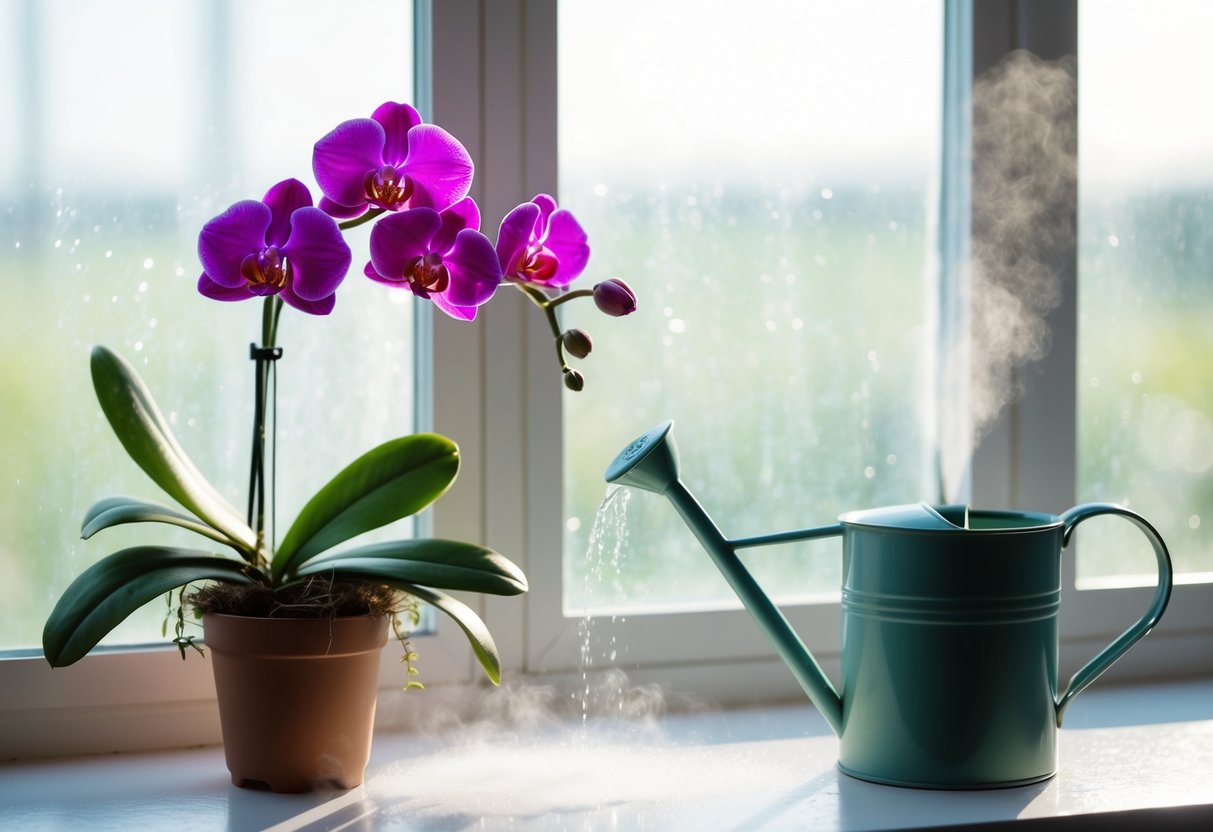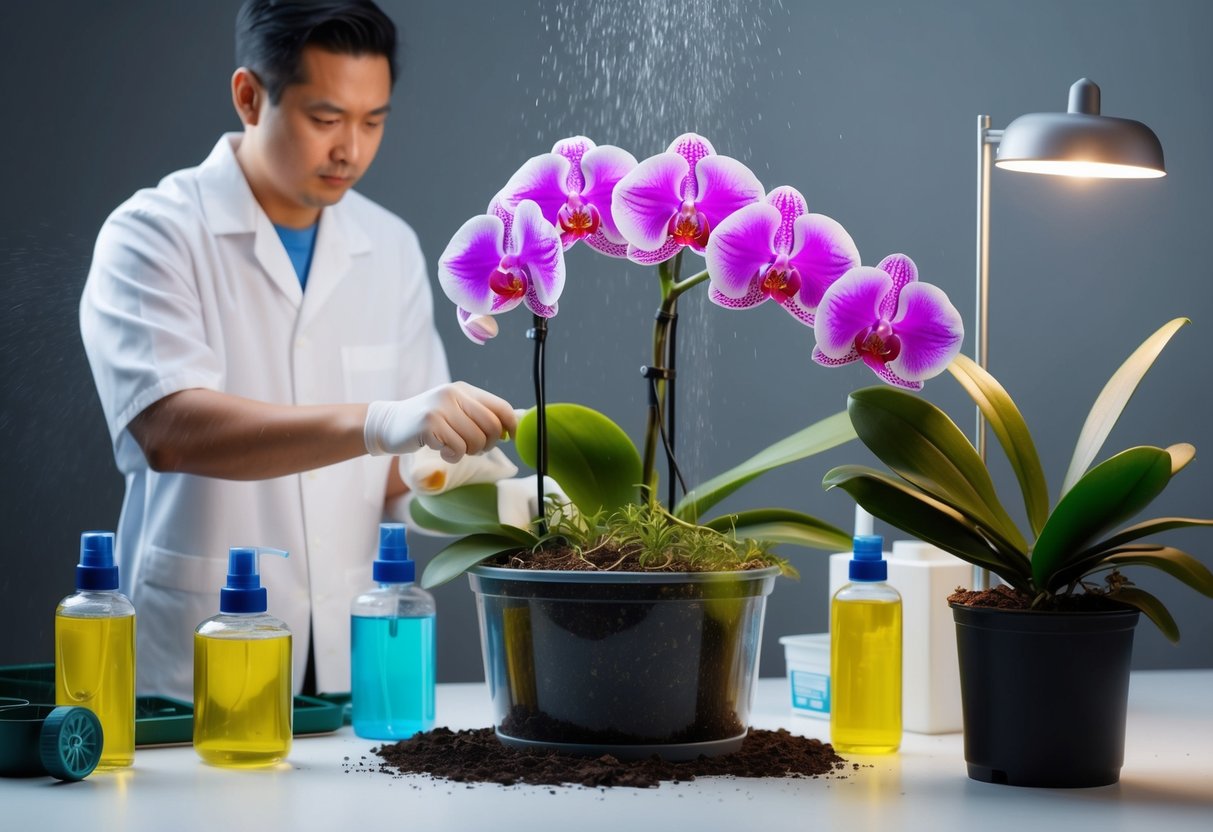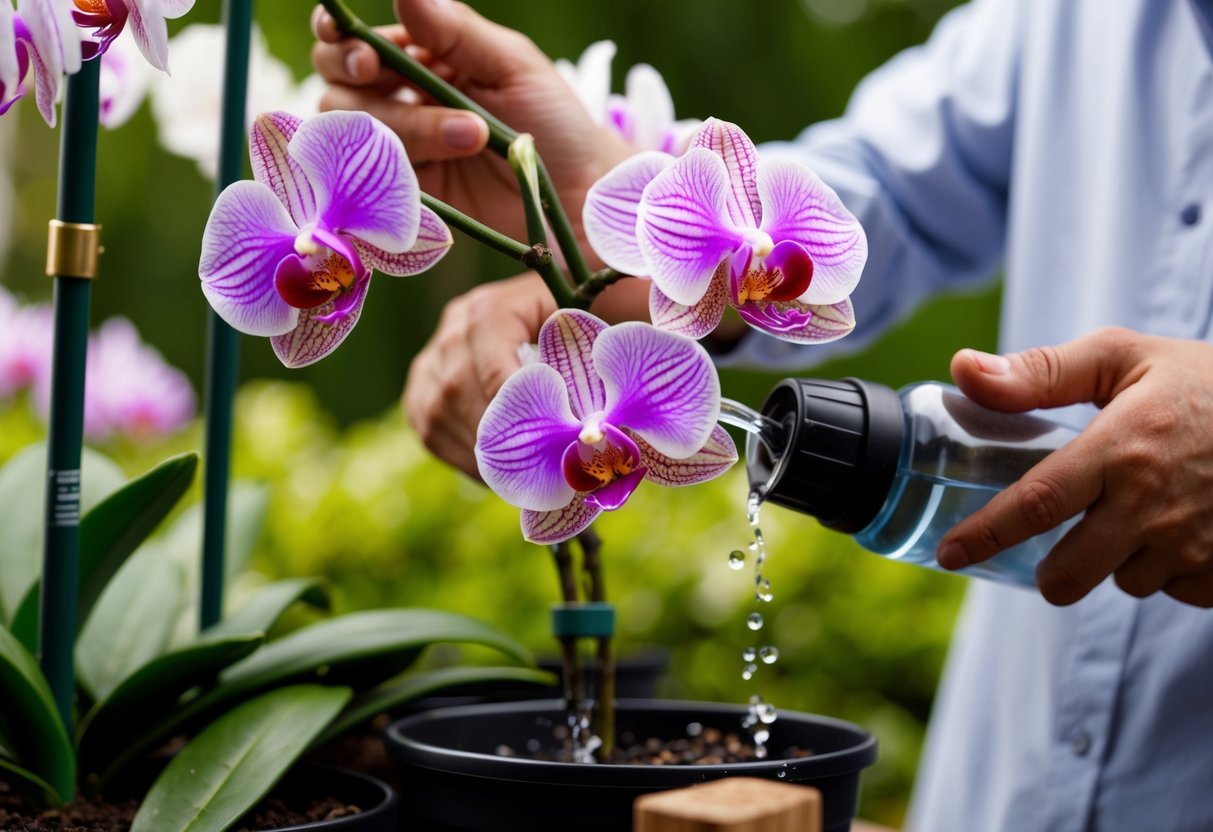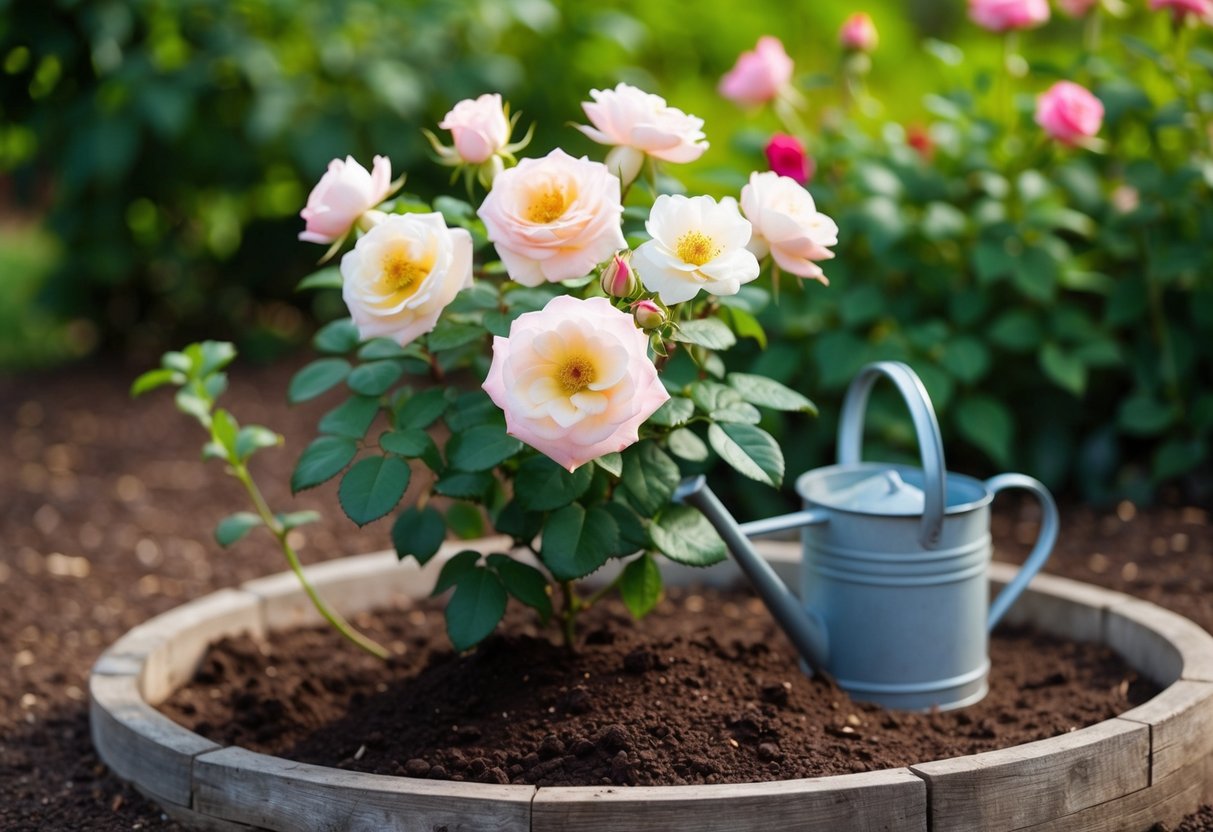What Flower Needs the Most Care? Tips for Nurturing Delicate Blooms
When it comes to gardening, you might find that some flowers demand a bit more TLC than others. If you’re up for the challenge, you’re in for a rewarding experience. The Camellia often tops the list of flowers needing the most care. These blooms require regular watering, particular soil conditions, and protection from harsh weather to truly thrive.

Taking care of Camellias isn’t just about watching them grow; it’s an opportunity to delve deep into the art of gardening. With their beautiful, lush blooms, they can transform any garden into a vibrant oasis. Whether you’re a seasoned gardener or just starting out, understanding the delicate nature of Camellias will give you a sense of accomplishment as you nurture them.
If you’re curious and ready to learn more about the unique needs of Camellias or the characteristics of other high-maintenance flowers, stick around. You’ll discover tips and tricks for ensuring your garden becomes a flourishing display of nature’s best.
Determining Plant Care Levels

When figuring out the level of care different plants require, it’s important to understand their soil needs and sun exposure. These factors greatly impact how much effort you’ll need to put into keeping your plants healthy and vibrant.
Understanding Soil Needs
Knowing the type of soil your plants need is essential. Plants thrive in different soil types, such as clay, loam, or sand. For instance, some plants prefer well-drained soil to prevent water from pooling around their roots. This is often the case for plants in sandy soils, which naturally drain easily.
You should check if your plant prefers acidic or alkaline soil. If unsure, a soil pH test can help. Amend the soil with compost or peat moss to adjust its texture and nutrients based on your plant’s requirements. Regularly testing and adjusting the soil can make a huge difference in plant health.
Evaluating Sun Exposure
Sunlight is crucial for photosynthesis, the process that helps plants grow. But not all plants need the same amount of sun. Some plants thrive in full sun, requiring at least six hours of direct sunlight each day. Others do better in partial sun, enjoying the morning sun but needing shade in the afternoon.
If your plant is under- or over-exposed to the sun, you might see symptoms like sunburnt leaves or stunted growth. Be sure to check the specific sun preferences for each plant you have. You may need to place plants strategically in your garden or home to ensure they get the right light exposure.
High-Maintenance Flowers Overview

Peonies and hydrangeas are two types of flowers that require special attention. Understanding their needs can lead to thriving, beautiful blooms. Let’s explore the care requirements for each.
Peony Care Requirements
Peonies are stunning flowers, but they need specific conditions to thrive. Light is essential, so plant them where they’ll receive at least six hours of daily sunlight. Make sure the soil is well-drained and rich in organic matter. You can achieve this by adding compost when planting.
Water your peonies deeply, especially during dry spells. It’s important not to overwater, as they prefer slightly dry conditions. Mulching around the base can help retain moisture and control weeds, but keep the mulch away from the stems to prevent rot.
Peonies also benefit from staking, particularly for varieties with heavy blooms. Use supports to keep them upright and protect them from wind damage. Remember, patience is key, as peonies may take a few years to establish and bloom well.
Hydrangea Care Guide
Hydrangeas, with their vibrant blooms, require specific care. Start by picking the right spot; morning sun with afternoon shade is ideal. Soil should be fertile, moist, and well-drained. You can adjust the pH to change bloom color, with acidic soil producing blue flowers and alkaline soil leading to pink ones.
Consistent watering is crucial, especially in the summer. Hydrangeas are thirsty plants, so aim to keep the soil evenly moist. Mulching can also be beneficial for moisture retention.
Pruning hydrangeas depends on the variety you have. For example, some bloom on old wood, while others bloom on new wood. Knowing your plant type helps you prune at the right time to promote abundant flowering. Regular fertilizing in spring can further boost their growth and bloom production.
Perennial Flowers with Specific Needs

Perennial flowers like Echinacea and hostas can thrive with the right care. Each has unique requirements that you need to consider for a healthy garden. Understanding these needs ensures that even the choosiest plants grow beautifully.
Echinacea Cultivation Tips
Echinacea, also known as coneflower, is a striking plant with vibrant blooms. To grow it well, you should start with well-drained soil. Echinacea prefers full sun, so place it where it can soak up the light. Watering is essential during dry spells, but be careful not to overwater. Space each plant about 18 inches apart to give them room to grow.
During the bloom season, deadheading the flowers encourages more blooms. Also, applying a balanced, slow-release fertilizer in spring can boost growth. Once established, Echinacea is relatively low-maintenance. This makes it a fantastic choice for beginner gardeners looking for hardy yet beautiful plants.
Special Care for Hostas
Hostas are known for their lush green leaves and thrive in shaded areas. You should choose a location with dappled sunlight to prevent leaf burn. Hostas prefer moist, well-drained soil, so keep the soil evenly moist but not soggy. Mulching can help retain moisture and control weeds.
Slugs and snails can be an issue with hostas, so using a safe, organic deterrent can help protect your plants. In the fall, trimming back the foliage can help prepare the plant for winter. Fertilizing with a balanced, slow-release fertilizer in the spring is beneficial for growth and vigor.
Growing Lavender Successfully
Lavender requires a sunny, well-drained spot to flourish. It thrives in sandy or gravelly soil that doesn’t hold excess moisture. Overwatering can lead to root rot, so it’s best to water deeply but infrequently. Prune lavender in early spring to maintain its shape and encourage new growth.
Spacing plants 12 to 18 inches apart allows air circulation and helps prevent disease. Lavender benefits from slightly alkaline soil, so adding lime may help if your soil is acidic. Regularly cutting back spent blooms encourages flowering throughout the season and keeps the plant tidy and productive.
Mid-Care Flowers for Your Garden

In your garden, finding flowers that require moderate attention can be satisfying and manageable. Daylilies and Black-Eyed Susans are two great options, offering beauty and color with a bit of care.
Daylily Planting and Care
Daylilies are versatile and colorful flowers that fit into most gardens. They enjoy full sun, but can also thrive in partial shade. When planting daylilies, choose well-draining soil and space each plant about two feet apart.
Water them regularly, especially during dry spells, to help the blooms thrive. Keep the soil moist but not waterlogged.
Regular fertilization is key to healthy blooms. Use a balanced fertilizer in early spring and again after the first blooming cycle. Deadheading, or removing spent flowers, encourages more blooms and keeps plants looking tidy.
Although daylilies are generally resistant to pests, keep an eye out for aphids and mites. A gentle spray with water or insecticidal soap can manage these pests effectively.
Caring for Black-Eyed Susan
Black-Eyed Susans are admired for their sunny yellow petals and dark centers. These plants love full sun and do well in a variety of soil types, including clay and loamy soils.
Watering needs are moderate. Make sure not to overwater, as they prefer dry to moderately moist soil conditions. Plant them about 18 inches apart to allow air circulation, which helps prevent fungal diseases.
Fertilization isn’t usually necessary for Black-Eyed Susans, but a layer of mulch can help retain moisture and keep the roots cool. Deadheading faded flowers will encourage the plant to produce more blooms throughout the growing season.
Watch out for slugs and snails, as they can occasionally be a problem. Hand-picking them off the plants or using eco-friendly slug control products can help.
Low-Maintenance Blooms

Finding flowers that require little attention can brighten your garden without much effort. Marigolds and Coral Bells are two types of low-maintenance plants that offer vibrant colors and easy care routines suitable for any gardener.
Enjoying Marigolds with Ease
Marigolds are perfect for gardeners looking for low-maintenance flowers. These bright blooms thrive in full sun and adapt to most soil types, making them easy to grow in a variety of settings. You only need to water marigolds moderately, especially during dry spells.
Marigolds are known for their pest-repellent properties, especially against nematodes and other insects. This makes them a great companion plant in vegetable gardens. Deadheading spent blooms can encourage more flowers to grow, but it’s not essential. You can read more about marigolds and other easy care flowers at Petal Republic.
Coral Bells in the Garden
Coral Bells, known for their colorful leaves, are another excellent choice for low-maintenance gardening. These perennials do well in partial shade and tolerate various soil conditions. Their foliage can range from deep purple to bright lime green, providing year-round interest in your garden.
These plants require minimal watering once established and need little pruning. Make sure to mulch around Coral Bells to retain moisture and protect their shallow roots. They can thrive in borders, rock gardens, or as ground cover. Explore more about Coral Bells and other easy-care perennials at Garden Design.







